#antonio di benedetto
Text




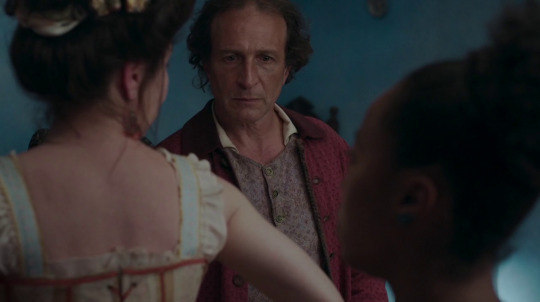
Zama,2017, Lucrecia Martel
3 notes
·
View notes
Text
"¿Lo sabes, lo has pensado?... La noche fue silencio.
Precedió el silencio a la Creación.
Silencio era lo increado y nosotros los creados venimos del silencio.
Al claustro materno, ¿tenían acceso los sonidos?
¿No se habían desarrollado mis órganos de oír, que de todo sonido carezco de huella y de memoria?
De silencio fuimos y al polvo del silencio volveremos.
Alguien pide: 'Que pueda yo recuperar la paz de las antiguas noches...'. Y se le concede un vasto silencio, serenísimo, sin bordes. (El precio es su vida).
Nuestras noches, Nina, carecen de compasión y de alma".
El silenciero, Antonio Di Benedetto
4 notes
·
View notes
Text

3 notes
·
View notes
Text
Blog about some recent reading
I finished A. V. Marraccini’s We the Parasites very very early Friday morning and then sneaked in two hours of sleep before a nine a.m. alarm. We the Parasites is a discursive ekphrasis, its finest moments concentrated on Cy Twombly (and his historical painting The Age of Alexander in particular). Marraccini turns her lens also to John Updike’s novel The Centaur, Jean Genet, and pomegranates and…

View On WordPress
2 notes
·
View notes
Photo
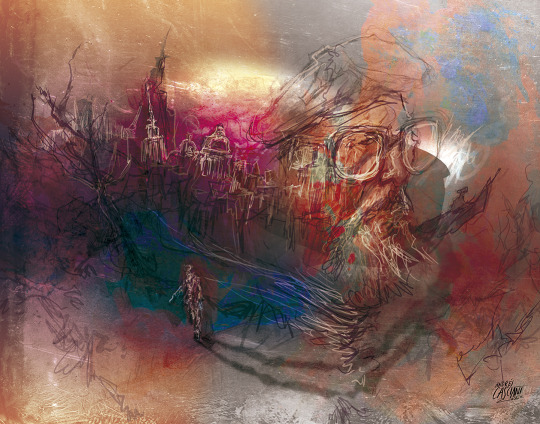
“FRAGMENTARIA" - citas ilustradas por Andrés Casciani (2/11/22)
“(En mi obra) hay intentos de humor. No puedo llamarlos nada más que tentativas, nunca lo logro. Todo es muy triste, se parece a la vida”.
*A 100 años del nacimiento de Antonio Di Benedetto
- Ilustración digital, 2022
http://andrescasciani.com/
#art#drawing#illustration#digital art#arte#dibujo#ilustración#fragmentaria#antonio di benedetto#andrés casciani
2 notes
·
View notes
Text
Cuentos Completos: Sensini
Seguimos las reseñas de los cuentos completos de Bolaño.
La colección empieza por su antología: Llamadas Telefónicas.
Sensini es un relato desolador, para un escritor con ciertas pretensiones laborales al menos. Roberto Bolaño nos relata acerca de la relación entre dos autores y sus vidas personales. Como se conocen a través de un certamen de prosa local y sobre la precariedad de un escritor…

View On WordPress
#Antonio Di Benedetto#Arturo Belano#bolaño#Concursos literarios#Cuentos completos#Desolación#Lina Meruane#Llamadas telefónicas#Roberto Bolaño#Sensini
0 notes
Text

https://instagram.com/alg0805?igshid=YmMyMTA2M2Y=
#dolor#tristeza#odio#depressive#lagrimas#angel suicida#un vacio dentro de mi#una suicida mas#una suicida enamorada#desamor#poesi#poema de amor#pablo neruda#antonio di benedetto#poesia neruda#poemas de desamor#instagram
0 notes
Text
27 febbraio 1936, rifulge l'eroismo di camicie nere e alpini sull'Uork Amba
Era il 27 gennaio 1936, quando durante lo svolgimento della seconda battaglia del Tembien, sul massiccio dell’Uork Amba, il cui nome significa «montagna d’oro», gli alpini della 5ª Divisione alpina “Pusteria” e le Camicie Nere della 114ª Legione CC.NN. “Garibaldina”, si coprivano di gloria nei duri combattimenti che si susseguirono nel corso dell’intera giornata. Ai primi verranno conferite 2…

View On WordPress
#114ª Legione CC.NN.#116ª Legione CC.NN. "Alpina" di Como e la#180ª Legione CC.NN. "Alessandro Farnese" di Parma#2ª Divisione CC.NN. "28 ottobre"#Alessandro Paoli#Battaglia di Cheren#Battaglione alpini "Uork Amba"#Camicia Nera del I Gruppo battaglioni Camicie Nere d&039;Eritrea#Cicirello Antonio#Filippo Freda#Francesco Di Benedetto#Freda Filippo#Generale Umberto Somma#Guido Paglia#Orlando Lorenzini#Romolo Galassi
0 notes
Text
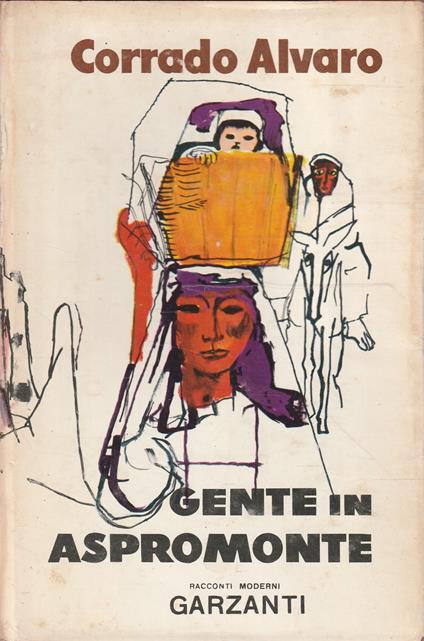
Revolt in Aspromonte - An early 20th century's tale of hopeless poverty in Southern Italy's Calabria
Gente in Aspromonte (which was translated in English as Revolt in Aspromonte) written in 1930 by Italian journalist and novelist Corrado Alvaro, is a short but powerful novel of peasant life in Southern Italy's Calabria and is recognized by Italians as one of the classics of their modern literature.

Gente in Aspromonte is the story of the shepherd Argirò and his family––of their struggle for survival, and some shred of dignity, against the degrading oppression of the feudal family which controls their village. In his despair, Argirò believes that if only he can educate his youngest son, Benedetto, to be a priest he will achieve status and revenge on those who have wronged him. To this end, he sacrifices himself and the gentle older brother, Antonello. A simple tale––but told with a poetry of style which gives it a somber beauty.

Corrado Alvaro (San Luca, 15 April 1895 – Rome, 11 June 1956) was an Italian journalist and writer of novels, short stories, screenplays and plays. He often used the verismo style to describe the hopeless poverty in his native Calabria.
Gente in Aspromonte, which examined the exploitation of rural peasants by greedy landowners in Calabria, is considered by many critics to be his masterpiece.

He was born in San Luca, a small village in the southernmost region of Calabria. His father Antonio was a primary school teacher and founded an evening school for farmers and illiterate shepherds. Alvaro was educated at Jesuit boarding schools in Rome and Umbria. He graduated with a degree in literature in 1919 at the University of Milan and began working as a journalist and literary critic for two daily newspapers, Il Resto del Carlino of Bologna and the Corriere della Sera of Milan.

He served as an officer in the Italian army during World War I. After being wounded in both arms, he spent a long time in military hospitals. After the war, he worked as a correspondent in Paris (France) for the anti-Fascist paper Il Mondo of Giovanni Amendola. In 1925, he supported the Manifesto of the Anti-Fascist Intellectuals written by the philosopher Benedetto Croce.
In 1926 he published his first novel L'uomo nel labirinto (Man in the Labyrinth), which explored the growth of Fascism in Italy in the 1920s. A staunch democrat with strong anti-Fascist views, Alvaro's politics made him the target of surveillance of Mussolini's Fascist regime. He was forced to leave Italy and during the 1930s he travelled widely in western Europe, the Middle East, and the Soviet Union. Journeys he later recounted in his travel essays. L'uomo è forte (1938; Man Is Strong), written after a trip to the Soviet Union, is a defence of the individual against the oppression of totalitarianism.
Alvaro is noted for his realistic, epic depictions of the Italian poor. His later work portrayed the contrasts between a yearning for the simple, pastoral way of life, and the aspiration to achieve material success that attracts people to the city. He died in Rome in 1956.
Follow us on Instagram, @calabria_mediterranea
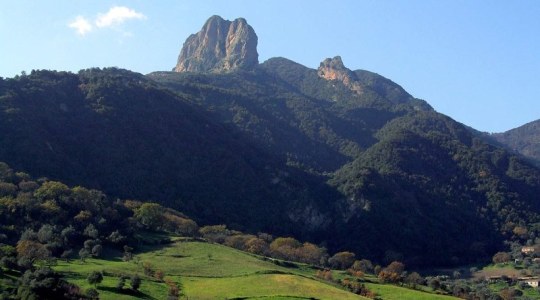
#gente in aspromonte#corrado alvaro#italian literature#calabria#italy#italia#south italy#southern italy#letteratura italiana#letteratura#literature#authors#aspromonte#peasants#peasant life#1930s#1930#1930's#poverty#poor#san luca#mountains#antifascismo#antifascism
16 notes
·
View notes
Text

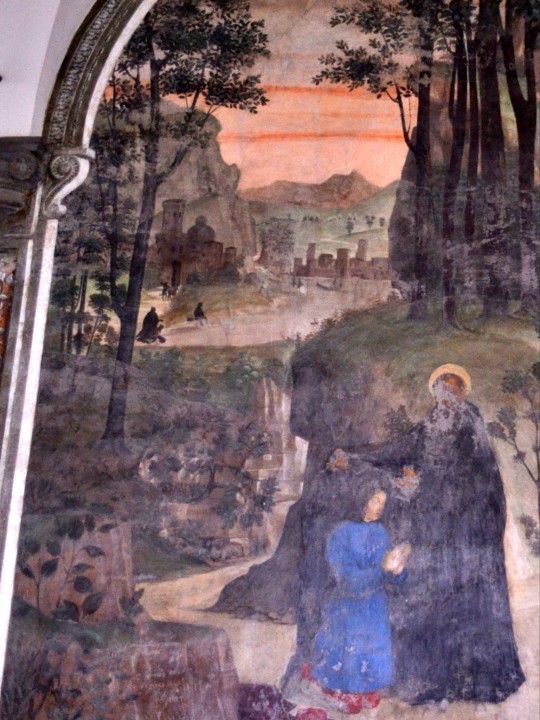
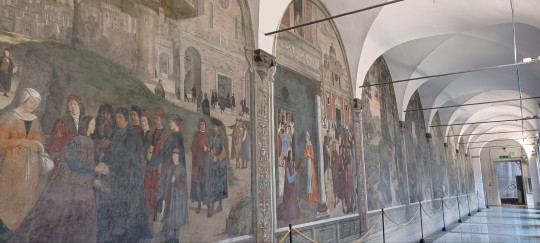


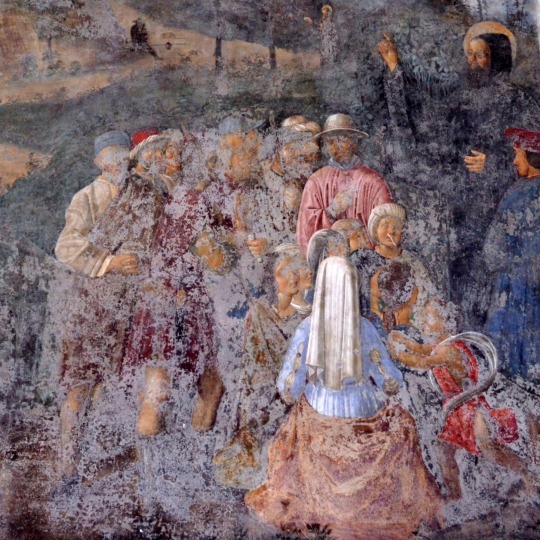
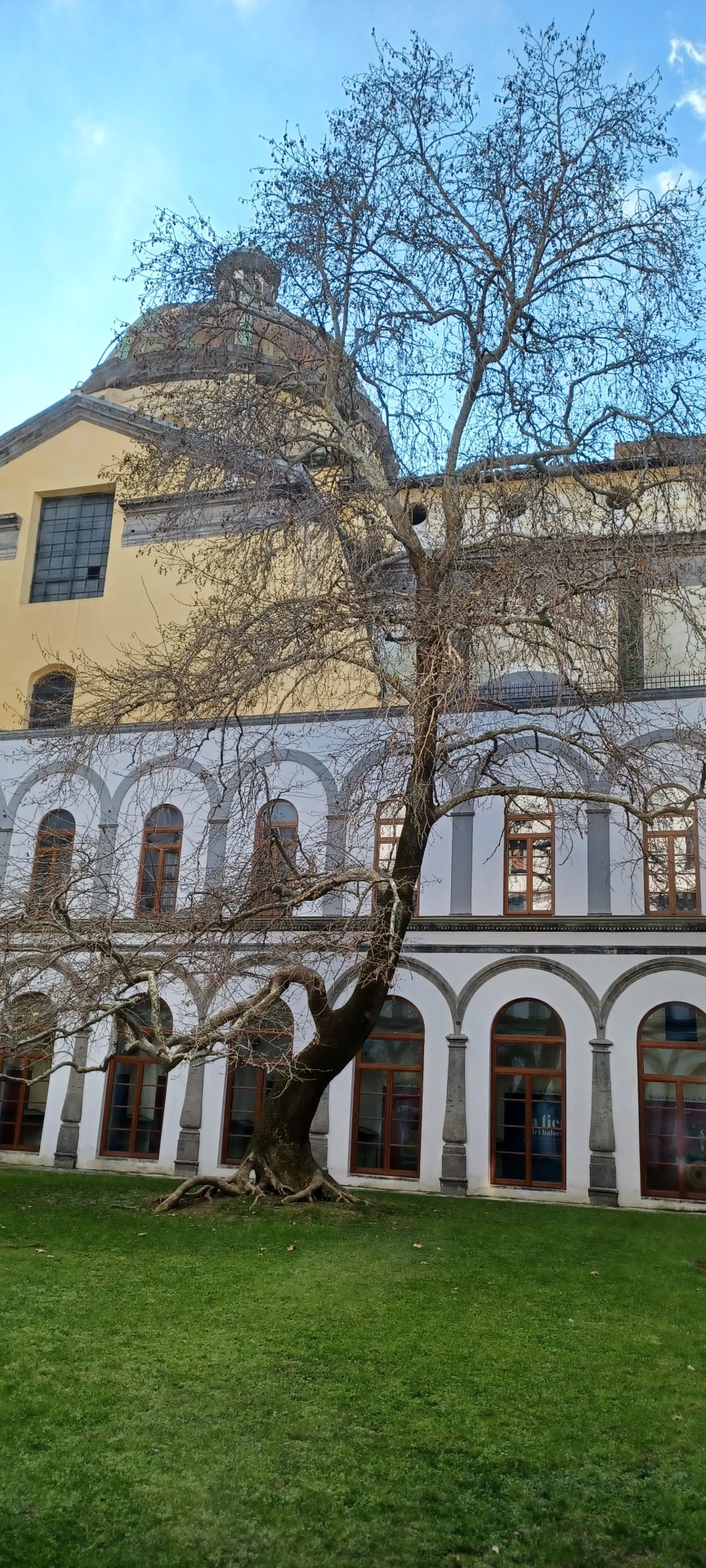
Antonio Solario, Storie della vita di San Benedetto (inizi XVI sec.), Chiostro del Platano, Monastero dei Santi Severino e Sossio - Archivio di Stato, Napoli.
#antonio solario#napoli#art history#naples#art#renaissance#italian renaissance#16th century#saint benedict#santi severino e sossio#naples churches
79 notes
·
View notes
Text

Current Reading: The Silentiary by Antonio di Benedetto
In post-WWII South America, a struggling writer embarks on a murderous thought experiment to help kickstart his career in this next tale of longing from the author of Zama.
The Silentiary takes place in a nameless Latin American city during the early 1950s. A young man employed in middle management entertains an ambition to write a book of some sort. But first he must establish the necessary precondition, which the crowded and noisily industrialized city always denies him, however often he and his mother and wife move in search of it. He thinks of embarking on his writing career with something simple, a detective novel, and ponders the possibility of choos- ing a victim among the people he knows and planning a crime as if he himself were the killer. That way, he hopes, his book might finally begin to take shape.
The Silentiary, along with Zama and The Suicides, is one of the three thematically linked novels by Di Benedetto that have come to be known as the Trilogy of Expectation, after the dedication “To the victims of expectation” in Zama. Together they constitute, in Juan José Saer’s words, “one of the culminating moments of twentieth-century narrative fiction in Spanish.”
6 notes
·
View notes
Text
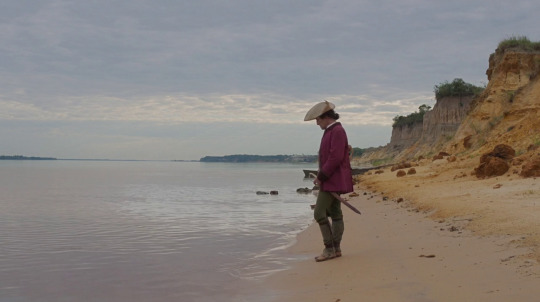
Zama, 2017, Lucrecia Martel
4 notes
·
View notes
Text
Portrait of Princess Louise Hippolyte of Monaco (1687-1731) by Jean Baptiste van Loo

About Louise Hippolyte of Monaco: Louise Hippolyte (10 November 1697 – 29 December 1731) was one of only two women to rule Monaco, reigning as Princess of Monaco from 20 February 1731 until her death in December the same year. She was the second daughter of Antonio I of Monaco and Marie de Lorraine-Armagnac. The second of six children born to her parents, she was the first of their children to survive infancy. She had sisters, but no brothers. Her father decided, with the permission of Louis XIV, that her future husband should assume the surname of Grimaldi and rule Monaco jointly with her. On 20 October 1715, at the age of eighteen, she married Jacques François Goyon, Count de Matignon. His candidacy was supported by King Louis XIV, who wanted to consolidate French influence in Monaco. Prior to this, Louise Hippolyte's father was eager to wed his daughter to a Grimaldi cousin. This marriage did not materialise due to the poor finances of the Grimaldis at the time. The marriage was not happy. Louise Hippolyte was described as a shy, while Jacques openly flaunted his mistresses in the royal court at Versailles. They had nine children together. Her father died on 20 February 1731. Louise Hippolyte traveled without her family from Paris to Monaco. As was customary in the case of female monarchs, it had originally been the plan to proclaim Jacques as her joint co-regent. However, it became clear that the people of Monaco did not welcome a Frenchman as co-ruler of Monaco and would prefer Louise Hippolyte as their sole ruler. Louise took advantage of this and took the oath as ruler of Monaco herself before Jacques had arrived. Finding himself without power, he soon returned to France.Princess Louise-Hippolyte ruled Monaco for seven months. She is described as a popular ruler during her short reign. She died of smallpox at the end of 1731.Following her death, her husband took power in Monaco, her son being a minor. Jacques neglected the affairs of Monaco and had to leave the country in May 1732. His ambition was to be declared regent until his son reached the age of 25, after which his son should abdicate his throne to him, but this was not accepted in Monaco. He abdicated in favor of their son, Honoré, the next year.
About the artist and his family: Jean-Baptiste van Loo (14 January 1684 – 19 December 1745) was a French subject and portrait painter.He was born in Aix-en-Provence, and was instructed in art by his father Louis-Abraham van Loo, son of Jacob van Loo (a painter of the Dutch Golden Age, known particularly for his mythological and biblical scenes. He was especially celebrated for the quality of his nudes to the extent that, during his lifetime, particularly his female figures were said to have been considered superior and more popular than those of contemporary and competitor Rembrandt.Though his father also painted, Jacob's success ensured that he would forever be referred to as the founder of the Van Loo family of painters; a dynasty which was influential in French and European painting from the 17th to the beginning of the 19th century.) Jean-Baptiste van Loo was patronized by the prince of Carignan, who sent him to Rome, where he studied under Benedetto Luti. In Rome he was much employed painting for churches.At Turin he painted Charles Emmanuel II, Duke of Savoy and several members of his court. Then, moving to Paris, where he was elected a member of the Académie Royale de Peinture et de Sculpture, he executed various altar-pieces and restored the works of Francesco Primaticcio at Fontainebleau. He also painted portraits of aristocrats living in or visiting Paris. In 1737 he went to England. He also painted Sir Robert Walpole, whose portrait by van Loo in his robes as chancellor of the exchequer is in the National Portrait Gallery, London, and the prince and princess of Wales. He did not, however, practise long in England, because of his failing health; he retired to Paris in 1742, and afterwards to Aix-en-Provence, where he died on 19 December 1745. His likenesses were striking and faithful, but seldom flattering. (I might post more about his work and his family's)
#new post#historical fashion#costume drama#dress#period piece#new to tumblr#pretty#princess#portrait#painting#politics#royalty#royals#monaco#house of grimaldi#monte carlo#oil on canvas#oil painting#fun facts#historical drama#historical#fashion history#history#long post#arranged marriage#louis xiv#palace of versailles#versailles#art#artist
15 notes
·
View notes
Text

6 notes
·
View notes
Text
Antonio di Benedetto's Nest in the Bones (Book acquired, 12 Nov. 2022)
Antonio di Benedetto’s Nest in the Bones (Book acquired, 12 Nov. 2022)
Indie Archipelago had a nice online sale the other week, so I ordered Nest in the Bones, a collection of stories by Antonio di Benedetto (translated by Martina Broner). Archipelago’s jacket copy:
Antonio Di Benedetto wrote with constant poetic innovation. His genre-defying stories, often dark and unexpectedly moving, explore the space between imagination and reality, tragedy and melodrama,…

View On WordPress
2 notes
·
View notes
Note
Che cos'è la lore di mazzara del vallo? 💀💀💀
beloved my beloved in breve la lore di mazzara del vallo è il racconto di come Lorenzo Urciullo e Antonio Di Martino si sono conosciuti, il tutto recuperato da varie interviste (e io sono stato benedetto da un'ottima memoria che mi fa prendere alti voti con 10 ore di studio); a lei la breve lista di cosa è successo (fatta, appunto, a memoria)
- quando si sono conosciuti Lorenzo apriva il concerto di Antonio e, a Lollo, Dima stava parecchio sul cazzo (allegedly, ma ci arriviamo dopo), le motivazioni accreditate per quell'odio sono:
Antonio aveva un disco all'attivo e si era già montato la testa
Antonio era una 'spocchia' / 'antipatico' / ecc
Antonio faceva il finto intellettuale
- Durante un intervista, mentre Lollo iniziava a raccontare questa cosa, Antonio ha detto "ma va, ma non è vero"; ci stanno perculando da undici anni a questa parte? Non ne dubiterei nemmeno un istante
- Nessuno, fino ad oggi, ha mai capito quale fosse la prima impressione di Antonio su Lollo, finalmente abbiamo ricevuto una risposta non-risposta che cito perché sono fresco di ascolto: "Lorenzo io non te lo dirò mai quello che ho pensato di te, perché ci rimarresti molto male". Grazie Cachemire Podcast.
- A spettacolo finito, per qualche motivo non ancora dischiuso al popolo, si sono ubriacati insieme (avevano fatto pace? chissà)
- Ubriachi, sono andati a suonare per le vie di Mazzara del Vallo "Ma la notte", qui il reperto storico; hanno fatto casino per le strade (abbastanza da beccarsi una secchiata d'acqua) e si sono addirittura persi
- Lorenzo afferma di non ricordarsi quello che è successo dopo aver suonato a causa dell'alcol; Antonio anche qui in piena omertà non ha mai rilasciato dichiarazioni sugli avvenimenti
- ??????
- Sono diventati collaboratori e amici
Come puoi ben vedere beloved mancano dei pezzi, ma io e tutte le persone che mi accompagnano in questo delirio da tanti anni continuiamo a scavare nel passato per riuscire finalmente ad avere il quadro completo della MazzaraDelValloLore
18 notes
·
View notes